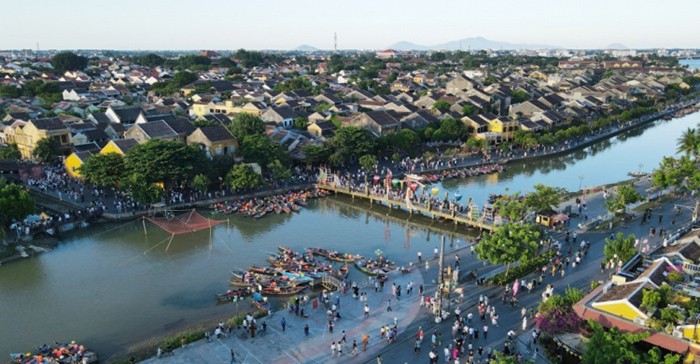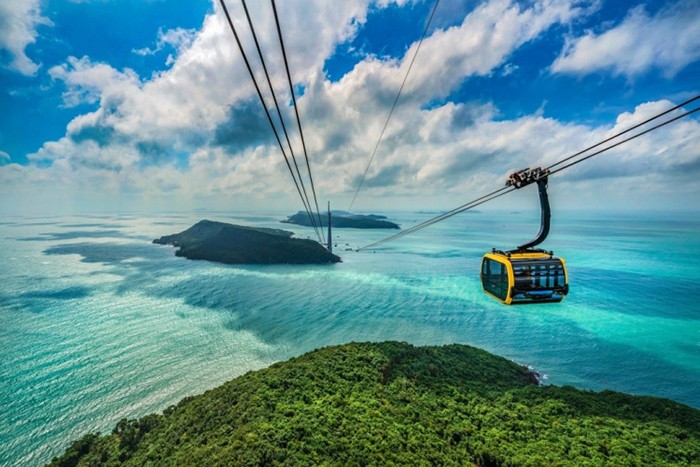
Creating tourism sites bearing Vietnamese identity
Latest
 |
| It’s necessary to create tourism sites bearing Vietnamese identity. (Photo: VNE) |
“Difficulties” for tourism industry
According to a report of Ministry of Culture, Sport and Tourism, within 10 months in 2023, the number of international tourists visiting Vietnam reached approximately 10 million, an increase of 4.6 times over the same period last year, exceeding the yearly plan target; domestic visitors reached 98.7 million; total revenue from tourists reached 582.6 trillion VND.
However, the number of international tourists within 10 months in 2023 account only 69% compared to the same period in 2019 (before COVID-19 pandemic). Domestic tourists, after a period of strong growth in 2022, are showing signs of slowing down. Besides the achieved results, Vietnam's tourism industry still faces many difficulties and challenges.
There are some reasons for the above-mentioned situation. First, some major market has opened slowly and not yet fully recovered as before. In addition, the connection and exploitation of potential and new markets are still slow and having difficulties. Last but not least, it is becauce of the customers’ tendency of choosing close sites instead of the Vietnam’s major markets at remote locations.
Minister of Culture, Sport and Tourism Nguyen Van Hung said that the information of update and new policies and regulations of Vietnamese tourism is still limited and lacks of timeliness in international major markets. The tourism management in some localities shows a lack of decisiveness, not promptly handling issues of environmental pollution, waste, "ripping off" tourists... affecting the Vietnamese tourism image and brand.
According to Mr. Vu The Binh, Chairman of Vietnam Tourism Association, tourism is the hot issue neet to be concerned. During the past time, there have been so many policies of early opening market early, releasing detailed action plans, etc.
Over the past 10 months, the tourism industry has tried its best but there are still many things that have not been achieved. Although the number of customers are increasing rapidly together with the domestic demand, but the speed has decreased, he said.
Mr. Vu The Binh added that, even during the Covid-19 epidemic, the tourism industry still existed, in many provinces it was still operating, but when the epidemic ended, cooperation links in the tourism industry seemed to disappear and returning to a state of weak competition including the arbitrarily increasing or lowering prices.
Creating more destinations with international standards
According to experts, beautiful nature and rich cultural heritage are not enough to make Vietnam become a "must visit" destination for international tourists, while competitors are constantly innovating and creating.
Therefore, it is time to create "destinations" that have both Vietnamese identity and meet international standards, consistent with the global trends of the tourism industry.
 |
| Hon Thom cables in Phu Quoc Island. (Photo: VNE) |
To do so, there needs to be initiatives for tourism development based on traditional Vietnamese cultural and historical values and the creative spirit of the new era; setting up programs to promote Vietnamese tourism at the national and international level, so that destinations truly bear Vietnamese identity.
As of September 2022, Vietnam has nearly 900 urban areas with 5 centrally run cities, contributing 70% of the country's GDP. In many urban areas with outstanding natural and human resources, tourism has truly become a driving force that actively contributes to local socio-economic development, such as Ho Chi Minh City, Sa Pa (Lao Cai), Ha Long (Quang Ninh), Sam Son (Thanh Hoa), Cua Lo (Nghe An), Hoi An (Quang Nam), Nha Trang (Khanh Hoa), Vung Tau (Ba Ria-Vung Tau)...
The development of tourism in urban areas not only contributes to improving the landscape, infrastructure and local public services, bringing many job opportunities to society, but also creates a spillover effect to many related professions developing together.
In Vietnam’s Tourism Development Strategy until 2030, tourism development in urban areas is still identified as one of the directions that needs to be prioritized to promote. Assoc. Dr. Pham Trung Luong, Vice Chairman of Vietnam Tourism Training Association, said that tourism development in urban areas needs to attach importance to destination management based on the principle of "carrying capacity" and the principle of responsible tourism to ensure sustainable tourism development.
Tourism Department needs to collaborate with other industries, departments to build and implement the research on styem of criteria, specific standards about urban tourism – where tourism have its leading role in socio-economic development activities. On that basis, building strong brands on the superiority and specificity of urban areas such as green urban areas, smart urban areas or urban titles such as livable urban areas, happy urban areas and peace urban areas. Then the level of urban destination recognition as well as the brand of urban tourism products can be increased.
In addition, Vietnam needs to adjust urban tourism planning, giving priority to the urban centers, focusing on preserving traditional urban architectural works in old quarters associated with convenient systems and public service utilities.
Mr. Luong also said that it is necessary to accelerate the application of 4.0 technology in implementing the goal of developing smart urban areas, helping tourists access the fastest and full information about tourist destinations as well as experience the most perfect urban tourism products with the support of technology. At the same time, focus should be put on on applying technology to use alternative energy, save electricity and water, reuse waste in tourism services and improve the system of collecting and treating waste from tourism to reduce negative effects of tourism on the environment.
In addition, experts also believe that the tourism industry needs to identify and build a more general and broader program, with a longer vision for sustainable tourism development, creating competitive tourism services in ASEAN and the world.

















